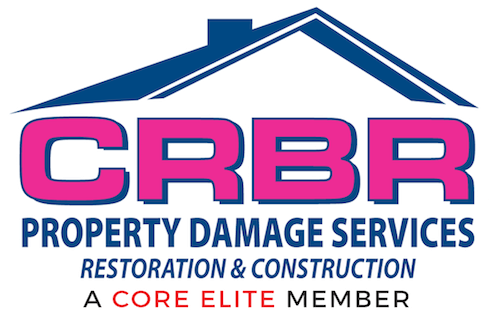A fire in your home is a moment no one forgets. Whether small or devastating, the aftermath is overwhelming. Between emotional trauma, visible damage, and the invisible dangers that follow, homeowners often feel paralyzed. If this is your first experience with residential fire damage, it’s important to understand what happens next—and what fire damage cleanup really involves.
This guide walks you through each step with a people-first approach. No panic, no pressure—just clear answers for what you need to do and how professionals can help restore your peace of mind.
The Aftermath Is More Than Ashes
When the flames are out and the fire trucks leave, you’re left with a mess that’s more complex than it appears. It’s not just blackened walls and broken windows. Fire leaves behind smoke residue, soot particles, damaged wiring, chemical corrosion, and soaked materials from suppression efforts.
That’s why fire damage restoration is a multilayered process. The sooner cleanup starts, the higher the chance of salvaging your structure and belongings.
Step One: Ensure the Home Is Safe to Enter
Before going back inside, your local fire department or restoration team must confirm the structure is stable. Fire can weaken beams, melt wiring, and compromise flooring, which means even “minor” fires can cause serious structural risk.
After clearance, you’ll want to walk through and document everything. Photos and videos of damage—especially personal property—are essential. You’ll need this whether you’re working with a contractor or considering contents restoration services.
Step Two: Smoke and Soot Removal Comes First
Smoke doesn’t just stay in the air—it seeps into everything. That lingering smell can persist for months unless properly treated. A professional smoke odor removal team uses specialized filters, negative air machines, and deodorizing agents to neutralize the particles.
More importantly, soot—the black film that coats surfaces—is acidic. It begins eating away at walls, ceilings, glass, tile, and metal immediately after the fire. Soot and smoke removal must happen early to avoid permanent staining or corrosion.
Step Three: Sorting Through Personal Belongings
This step is emotionally difficult but necessary. Fire doesn’t just damage walls; it impacts your life—furniture, heirlooms, clothing, electronics, books, and photos. Every item must be assessed:
- What’s salvageable?
- What needs specialized cleaning?
- What is a total loss?
Experts in fire damaged contents cleaning use advanced tools like ozone chambers, ultrasonic washers, and textile restoration equipment. These can often restore items you thought were beyond saving.
For instance, even electronics restoration after fire is possible when handled early and correctly. If your TV, PC, or audio system wasn’t directly melted but got smoke exposure, these can often be cleaned and repaired.
Step Four: Addressing Hidden Water Damage
Yes—fire means water too. Firefighters use thousands of gallons to extinguish flames. That water seeps into floors, drywall, and insulation, where it lingers.
After a fire, many homes require emergency water removal to prevent mold and long-term structural damage. From there, professionals use water extraction services and drying systems to fully remove trapped moisture. It’s part of the reason fire and smoke restoration often overlaps with flood recovery work.
Step Five: Structural Repairs and Rebuilding
Depending on the severity of the fire, the structure of your home may need reinforcement or reconstruction. This can include:
- Replacing drywall and insulation
- Reinforcing framing
- Roofing repair
- HVAC duct cleaning
- Electrical rewiring
Contractors that specialize in house fire repair services handle this part of the recovery process with your safety and comfort in mind. If you’re in Northern California, CRBR’s team includes licensed professionals trained to restore not just appearance, but integrity.
What About Smoke That’s Not From Flames?
In some cases, you might not have experienced an actual fire—but still have smoke-related damage. Examples include:
- A neighbor’s house fire
- A nearby wildfire
- Indoor mishaps like a grease fire or cigarette smoke remediation need
These situations may not require full restoration but still demand smoke cleanup services. Why? Because smoke particles can still cause respiratory irritation, discoloration, and that all-too-familiar smell.
Is DIY Cleanup Ever a Good Idea?
There are things you can safely do after a fire: open windows for ventilation, separate damaged from undamaged items, or clean surface soot from tile. But for most cleanup, DIY is risky. Breathing in soot, disturbing chemical residues, or using the wrong cleaning products can cause more harm.
Professional fire damage contractors not only have the right equipment—they know the materials, surfaces, and chemistry behind safe restoration. It’s worth investing in trained hands.
Preventing the Next One
Once you’ve restored your home, the goal is to protect it for the future. These steps can help:
- Install hard-wired smoke detectors with battery backups
- Keep fire extinguishers in kitchen and garage
- Have your HVAC system inspected annually
- Practice fire drills with your family
- Avoid leaving appliances running unattended
A clean, restored home deserves a second chance—don’t let fire risk creep back in through neglect.
Why Partner With CRBR?
We understand that fire and smoke cleanup isn’t just about physical damage. It’s about recovering your home, your memories, and your life. At CRBR, we’ve served families across Northern California for decades, walking them through fire recovery with compassion, speed, and unmatched technical skill.
Our team works directly with you—not just with systems and tools—but with understanding. From emergency smoke cleanup to full structural repair, we’re here every step of the way.
